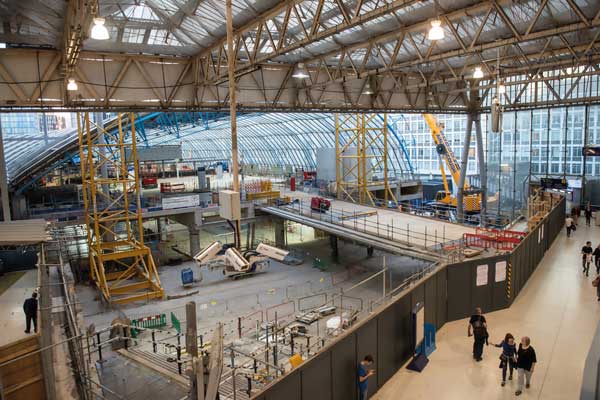Technical
AD 376: Fire design of concrete-filled hollow steel columns to Eurocode 4
Depending on the constructional details, Section 4 of BS EN 1994-1-2 ¹ presents three alternative design procedures for fire design:
- Tabulated data for specific types of structural members
- Simple calculation models for specific types of structural members
- Advanced calculation models.
For the fire design of concrete-filled hollow steel columns, clause 4.3.5 describes simple calculation models and clause 4.3.5.3 addresses unprotected concrete-filled hollow sections: the designer is directed to Annex H for the simple calculation model. However, the UK National Annex (NA to BS EN 1994-1-2:2005) states that Annex H of the code should not be used. This Advisory Desk note provides some background on Annex H and an update on the status of alternative guidance.
Annex H is informative and puts forward a method for calculating the design axial buckling load for concrete-filled hollow steel columns at elevated temperatures. A simple method is also given to account for the effects of eccentricity of the axial load.
Annex H follows an old method of calculating axial resistance of composite columns at ambient temperature. For fire resistance calculations, this method is particularly difficult to implement, as the composite cross section must be divided into many blocks and the calculations involve many iterations. Each round of iteration needs to use the detailed material non-linear stress-strain relationships of steel and concrete at different temperatures, for each block in the cross section.
Annex H allows for the effect of small eccentricities in axial load by introducing two modification factors, one as a function of the reinforcement ratio and one as a function of eccentricity and column dimensions.
A CIDECT research project (15Q) assessed the Annex H calculation method and found that it can be grossly inaccurate. For this reason, the UK National Annex (published in 2008), states in clause NA.3 that Annex H should not be used.
Instead, it is recommended that the column design method for the fire limit state should be consistent with that at ambient temperature ², but a reduction in strength and stiffness of the steel and concrete should be incorporated. Such a method has been implemented in the FIRESOFT software package developed by the University of Manchester for Tata Steel. FIRESOFT software and an associated quality assurance document, giving details of methodology and validation testing are available free of charge from Tata Steel. The software and document have the status of Non-Contradictory Complementary Information (NCCI).
The Tata Steel design guide for concrete-filled structural hollow section columns is currently being updated and will be made available from http://www.steel-ncci.co.uk/ in due course.
Contact: Dr Richard Henderson
Tel: 01344 636525
Email: advisory@steel-sci.com
- BS EN 1994-1-2:2005 (Incorporating corrigendum July 2008) Eurocode 4 – Design of composite steel and concrete structures – Part 1-2: General rules – Structural fire design
- Designers’ Guide to EN 1994-1-1; Eurocode 4: Design of composite steel and concrete structures; Part 1.1: General rules and rules for buildings; R P Johnson and D Anderson; Thomas Telford Publishing.










